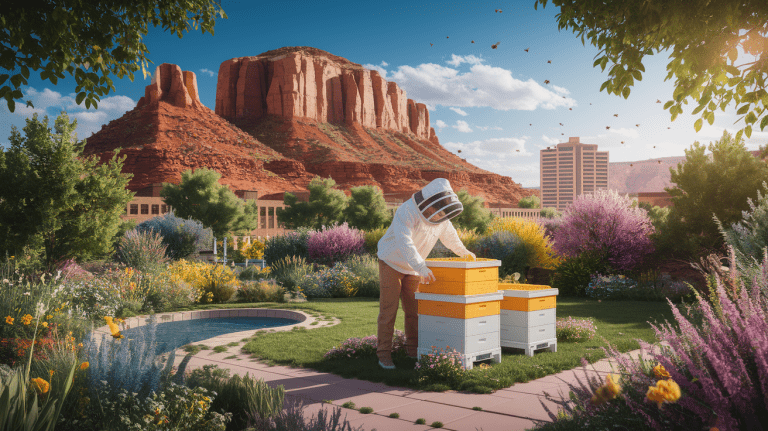Thrive in the Sand: A Practical Guide to Desert Gardening
Desert Dreams Start Here
Living in St. George, Utah, means being surrounded by some of the most breathtaking landscapes in the country. The dramatic red cliffs and expansive blue skies are a daily inspiration. But when it comes to bringing that beauty into our own backyards, the unique challenges of our desert environment can feel a little intimidating. Intense sun, high temperatures, and precious water resources are all part of St. George’s unique desert landscape. So, how do you create a lush, vibrant garden that doesn’t just survive, but truly thrives here?
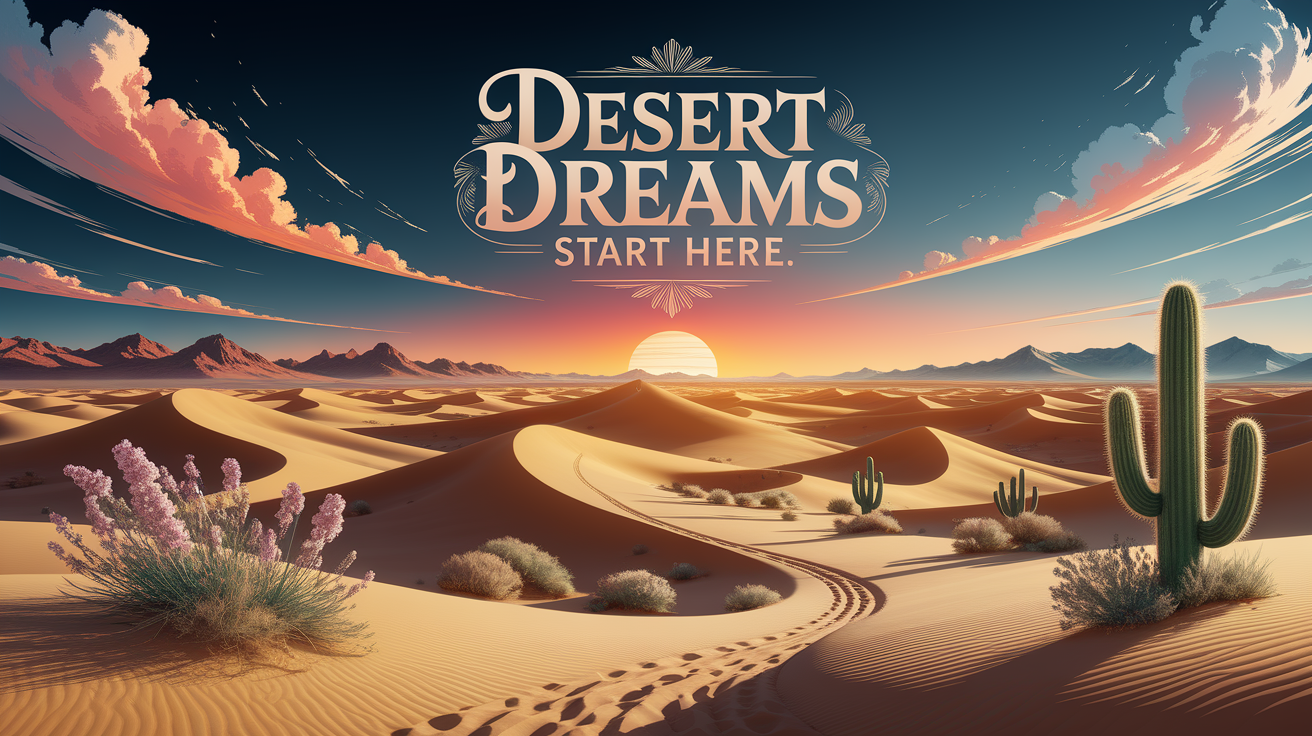
The secret isn’t fighting the desert; it’s about understanding and working with it. By embracing desert-friendly techniques and plants, you can cultivate a stunning, water-wise oasis that reflects the natural beauty of our region. This guide is your starting point for transforming that patch of sand and sun into the garden of your dreams. It’s all about making smart choices to create a sustainable and gorgeous space, and it’s easier than you might think when you know the basics of adjusting to a hot, dry climate.
Preparing Your Desert Soil
The foundation of any great garden is healthy soil, and in the desert, this step is absolutely crucial. Our native soil tends to be alkaline (less acidic) and low in organic matter, which can make it difficult for plants to absorb nutrients and for the soil to hold water. But don’t worry, this is a fixable problem!
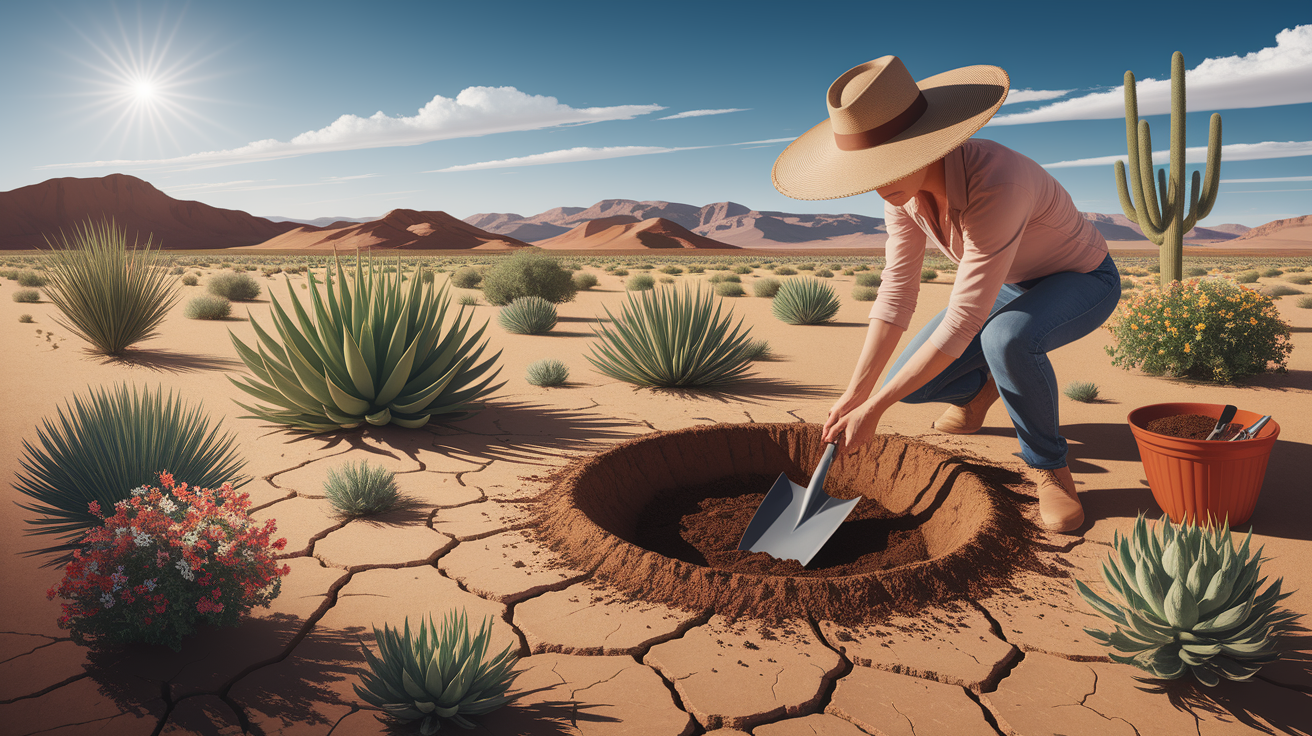
Your goal is to enrich the soil with organic matter. This improves its structure, helps it retain moisture, and provides essential nutrients for your plants. Here are some of the best horticultural practices for improving your soil:
- Compost: This is the number one soil amendment for any garden. It adds a rich blend of nutrients and helps sandy soil hold onto water.
- Worm Castings: A powerhouse of beneficial microbes and nutrients, worm castings are fantastic for boosting plant health.
- Well-Rotted Manure: An excellent source of nitrogen and other essential nutrients that feeds your plants over time.
Incorporating these materials directly into your garden beds is one approach. Another highly effective technique is creating raised garden beds or using container gardening. This allows you to completely control the soil environment, creating the perfect nutrient-rich base for everything from vegetables to flowers. These simple tips for desert soil preparation set the stage for success.
Smart Plant Selection for Arid Gardens
One of the most common mistakes in desert gardening is trying to grow plants that are better suited for wetter, cooler climates. The key to a beautiful and low-maintenance garden is to choose plants that are naturally adapted to our environment. This a core principle of xeriscaping—designing landscapes to reduce or eliminate the need for irrigation.
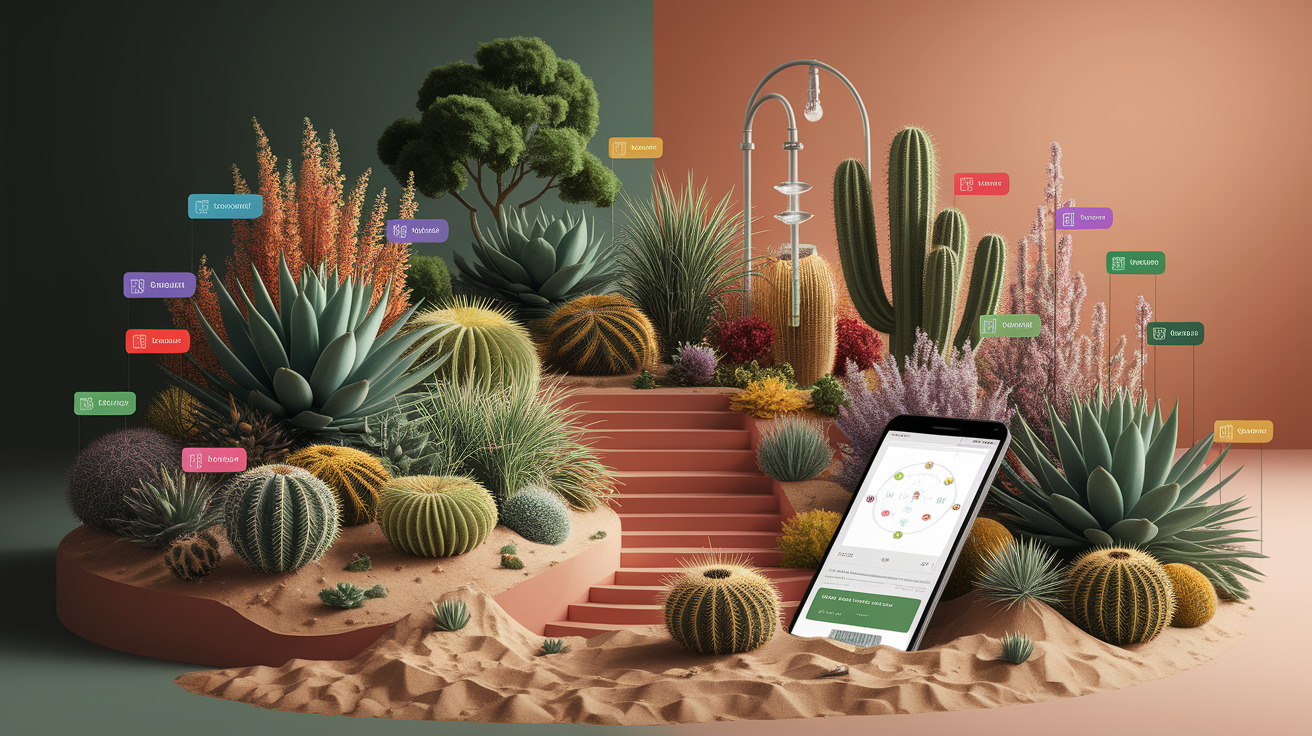
So, what are the best low-maintenance plants for a desert garden? Look for these types:
- Native Plants: These are the champions of the desert. Plants native to Southern Utah are already perfectly equipped to handle the sun, soil, and water conditions.
- Drought-Tolerant Plants: Many plants from other arid regions around the world also do wonderfully here. Think vibrant bougainvillea, fragrant rosemary, and tough-as-nails agave.
- Succulents and Cacti: These are the icons of desert landscaping for a reason. They offer incredible variety in shape, color, and texture and require very little water once established.
For inspiration, take a stroll through the magnificent Red Hills Desert Garden right here in town. It’s a living showcase of how stunning a garden filled with water-wise plants can be. You can also see what local growers are having success with by visiting the St. George Farmers Market, which is a great place to find plant starts that are already acclimated to our area.
Watering Wisely in Dry Climates
In the desert, water is our most precious resource. Smart watering isn’t just good for the environment; it’s good for your plants and your wallet. As a community, we’re all focused on St. George’s water conservation efforts, and your garden is a great place to make an impact. The goal is to deliver water efficiently and directly where it’s needed: the plant’s roots.
Effective Irrigation Methods
Forget old-school sprinklers that lose most of their water to evaporation. These modern irrigation systems are far more effective:
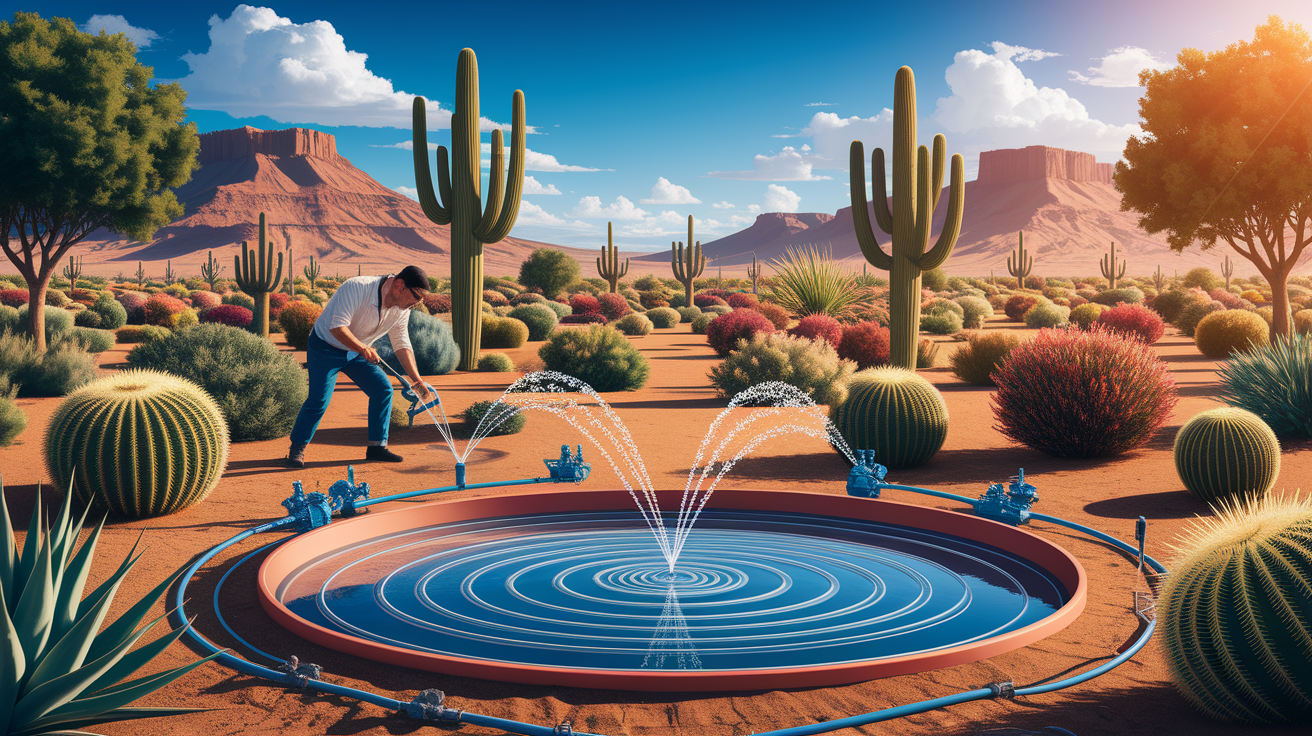
- Drip Irrigation: This is the gold standard for desert gardening. A network of tubes with small emitters delivers water slowly and directly to the base of each plant, minimizing waste.
- Soaker Hoses: Similar to drip systems, these porous hoses “weep” water along their entire length, providing a deep, slow soak for garden beds.
Water-Saving Techniques
Beyond your irrigation system, these simple habits make a huge difference in reducing water usage:
- Mulch, Mulch, Mulch: Applying a 2-3 inch layer of mulch (like wood chips, straw, or gravel) over your soil is one of the most effective things you can do. It suppresses weeds, keeps the soil cool, and dramatically reduces evaporation.
- Water Deeply, Less Often: Watering deeply encourages plants to develop deep root systems, making them more resilient to drought. A long, slow soak once or twice a week is much better than a light sprinkle every day.
- Water in the Morning: Water during the cool early morning hours to ensure that more water gets to the roots before the sun has a chance to evaporate it.
These proven efficient watering techniques are essential for sustainable gardening in our climate.
Designing for Heat: Creating Microclimates
Even in a hot climate, you can grow a surprisingly diverse range of plants—including vegetables! The trick is to create microclimates. A microclimate is a small area in your yard where the conditions (like temperature and sun exposure) are slightly different from the surrounding area. By thoughtfully creating microclimates, you can give more sensitive plants a helping hand.
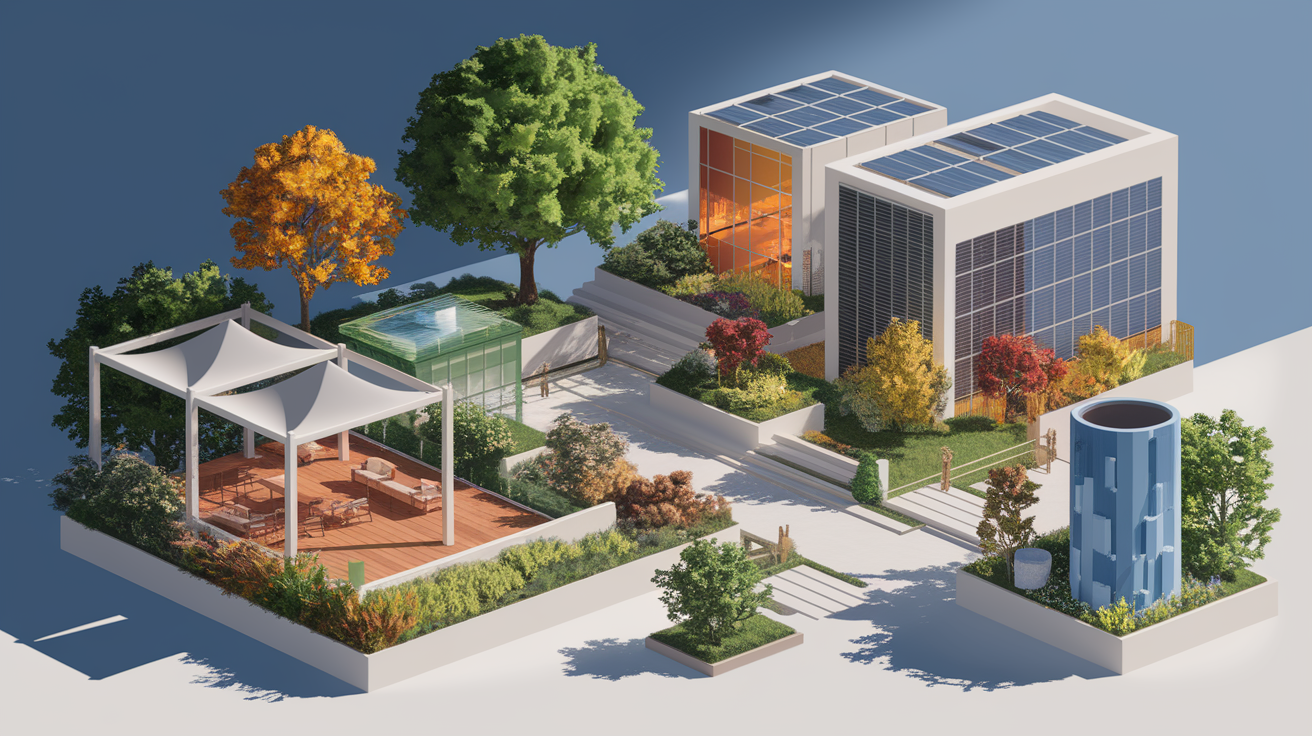
Here’s how to do it:
- Use Shade Structures: A simple shade cloth over a vegetable bed can lower the temperature significantly, protecting plants from the intense afternoon sun and preventing them from wilting or getting sunburned.
- Plant Strategically: Place smaller, more delicate plants on the east side of your house or near taller, tougher plants that can provide natural afternoon shade.
- Incorporate Boulders and Walls: Retaining walls and large rocks can absorb heat during the day and radiate it back at night, creating a warmer zone that can protect plants from unexpected cold snaps. They can also be used to create pockets of shade.
By using these design principles, you can successfully grow a variety of delicious vegetables and beautiful flowers that might otherwise struggle with the full force of the desert sun.
Keeping Pests and Problems at Bay
A healthy garden is a pest-resistant garden. By building good soil and choosing the right plants, you’re already halfway there. When pests do show up, it’s best to lean on natural, eco-friendly solutions that protect beneficial insects like bees and ladybugs.
Consider these pest control and companion planting strategies:
- Companion Planting: Some plants naturally repel pests. Planting marigolds near your tomatoes or rosemary and basil throughout the garden can help deter unwanted visitors.
- Encourage Beneficial Insects: Ladybugs, lacewings, and praying mantises are your garden’s best friends because they prey on common pests like aphids. You can attract them by planting flowers they love, like yarrow and cosmos.
- Use Natural Sprays: If you need to intervene, a simple insecticidal soap or neem oil spray can be an effective and safe way to manage pest populations without harming the environment.
Gardening is always a learning process, and some of the best additional horticultural tips come from simply observing your garden and responding to its needs.
Blooming Beneath the Sun: Your Desert Garden Awaits
Gardening in St. George isn’t about overcoming the desert—it’s about embracing its unique rhythm and resilience. By preparing your soil, choosing water-wise plants, watering efficiently, and designing with the sun in mind, you can create a stunning, sustainable landscape that brings you joy for years to come.
Start small, be patient, and don’t be afraid to experiment. Your beautiful desert garden is waiting to bloom, proving that life can, and does, thrive in the sand.







